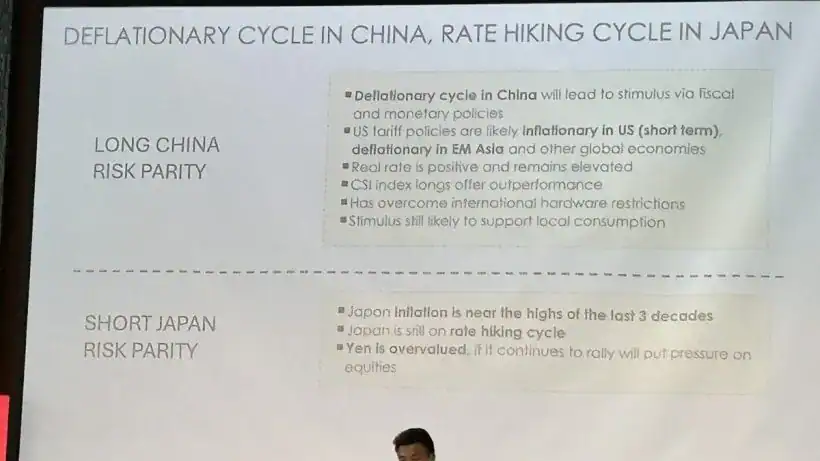At the 2025 Sohn Hong Kong Conference, Jonathan Xiong, CEO & CIO, Arrowpoint Investment Partners, presented a compelling thesis on a long China risk parity position relative to a short Japan risk parity position. This detailed analysis offered a glimpse into a sophisticated strategy aiming to capitalize on diverging economic and monetary policies in Asia's two largest economies.
Also see 2025 Sohn Montreal Conference: Einhorn, Lasry, Converium, Atreides, Permian, David Kempner & More
2025 Sohn Hong Kong Conference - Arrowpoint Investment Partners' Jonathan Xiong
The core of Xiong's argument revolves around the concept of risk parity. Historically, traditional 60/40 stock-bond portfolios often see their volatility primarily driven by the equity component. Risk parity seeks to equalize the contribution of risk from different asset classes by allocating a higher proportion of capital to assets with lower volatility (like bonds) to achieve a balanced risk profile. In this specific context, the trade primarily involved equities and bonds, with the understanding that other asset classes could also be incorporated.

Jonathan Xiong - The Long China Risk Parity Case
Jonathan Xiong posited that China is currently navigating a deflationary cycle, a situation that could be exacerbated by ongoing US tariffs, leading to increased domestic excess supply and further price depression. This mirrors Japan's experience in the late 1980s before its significant bubble burst, which plunged it into a deflationary spiral lasting 25 to 30 years.
Recognizing this historical precedent, China is widely expected to implement a substantial round of fiscal and monetary stimulus to avert a similar prolonged deflationary period.
Such stimulus measures, akin to those seen in the United States post-2008, are anticipated to trigger asset price inflation, causing both bonds and stocks to rally simultaneously. This scenario provides a stable portfolio that inherently hedges against potential downside risks in equities. A particularly peculiar and attractive dynamic identified by Xiong within Chinese equity onshore markets is a significant negative basis when investing in indexes.


